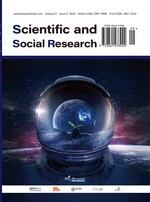Abstract
The potential applications of superhydrophobicity for self-cleaning, microfluidic systems, and so on, inspired by the “lotus leaf effect”, have recently attracted great attention from academia and industry. To date, however, neither experimental nor theoretical studies have reached the scalable application of superhydrophobic surfaces, and no simple methods have been developed to produce durable superhydrophobic surfaces. In this project, conical, cylindrical, and cube microstructures with different shapes and dimensions were prepared by 3D printing. Among these structures, the conical microstructures without further modification exhibited the best hydrophobic performance with a contact angle of 120°. However, the hydrophobic performance of the cube microstructures was significantly improved with the addition of an FAS coating to the surface, reaching 131°. This indicates that, with the help of the coating, the 3D printed materials with special features can be transformed into hydrophobic surfaces. The outcome of this project will be useful in promoting the efficient and low-cost preparation of superhydrophobic functional surfaces and their engineering applications.
References
Cassie ABD, Baxter S, 1944, Wettability of Porous Surfaces. Transactions of the Faraday Society, 1944(40): 546–551.
Celia E, Darmanin T, Givenchy ETD, et al., 2013, Recent Advances in Designing Superhydrophobic Surfaces. Journal of Colloid and Interface Science, 2013(402): 1–18.
Feng C, Zhang W, Deng C, et al., 2017, 3D Printing of Lotus Root-like Biomimetic Materials for Cell Delivery and Tissue. Advanced Science, 4(12): 1700401.
Feng L, Li S, Li Y, et al., 2002, Super-hydrophobic Surfaces: From Natural to Artificial. Advanced Materials, 14(24): 1857-1860.
Gu T, Zhu B, Ma J, 2001, Surface Chemistry. Science Press, Beijing.
Jagdheesh R, Garcia-Ballesteros JJ, Ocana JL, 2016, One-step Fabrication of Near Superhydrophobic Aluminum Surface by Nanosecond Laser Ablation. Applied Surface Science, 2016(374): 2–11.
Jopp J, Grull H, Yerushalmi-Rozen R, 2004, Wetting Behavior of Water Droplets on Hydrophobic Microtextures of Comparable Size. Langmuir, 20(23): 10015–10019.
Lawson RA, Robinson AP, 2016, Overview of Materials and Processes for Lithography. Frontiers of Nanoscience, 2016(11): 1–90.
Li W, Ma XJ, Xu JL, et al., 2021, Effects of Base Angle and Wettability of Nanostructures on Droplet Wetting Behaviors. Acta Physica Sinica, 2021(70): 126101.
Liu HH, Zhang HY, Li W, 2011, Thermodynamic Analysis on the Wetting Behavior of Hierarchical Structured Superhydrophobic Surfaces. Langmuir, 27(10): 6260–6267.
Li W, Amirfazli A, 2008, Hierarchical Structures for Natural Superhydrophobic Surfaces. Soft Matter, 4(3): 462–466.
Young T, 1805, An Essay on the Cohesion of Fluids. Philosophical Transactions of the Royal Society of London, 1805(95): 65–87.
Wang S, Li Y, Fei X, et al., 2011, Preparation of a Durable Superhydrophobic Membrane by Electrospinning Poly (vinylidene fluoride)(PVDF) Mixed with Epoxy–siloxane Modified SiO2 Nanoparticles: A Possible Route to Superhydrophobic Surfaces with Low Water Sliding Angle and High Water Contact Angle. Journal of Colloid and Interface Science, 359(2): 380–388.
Wei Q, Wang Y, Chai W, et al., 2017, Molecular Dynamics Simulation and Experimental Study of the Bonding Properties of Polymer Binders in 3D Powder Printed Hydroxyapatite Bioceramic Bone Scaffolds. Ceramics International, 43(16): 13702–13709.
Wenzel RN, 1936, Resistance of Solid Surfaces to Wetting by Water. Industrial & Engineering Chemistry, 28(8): 988–994.
Zheng J, Gu C, Tong Y, et al., 2016, A Smart Superhydrophobic Coating on AZ31B Magnesium Alloy with Self-Healing Effect. Advanced Materials Interfaces, 3(14): 1500694.
Zhu M, Zuo W, Yu H, et al., 2006, Superhydrophobic Surface Directly Created by Electrospinning based on Hydrophilic Material. Journal of Materials Science, 41(12): 3793–3797.
